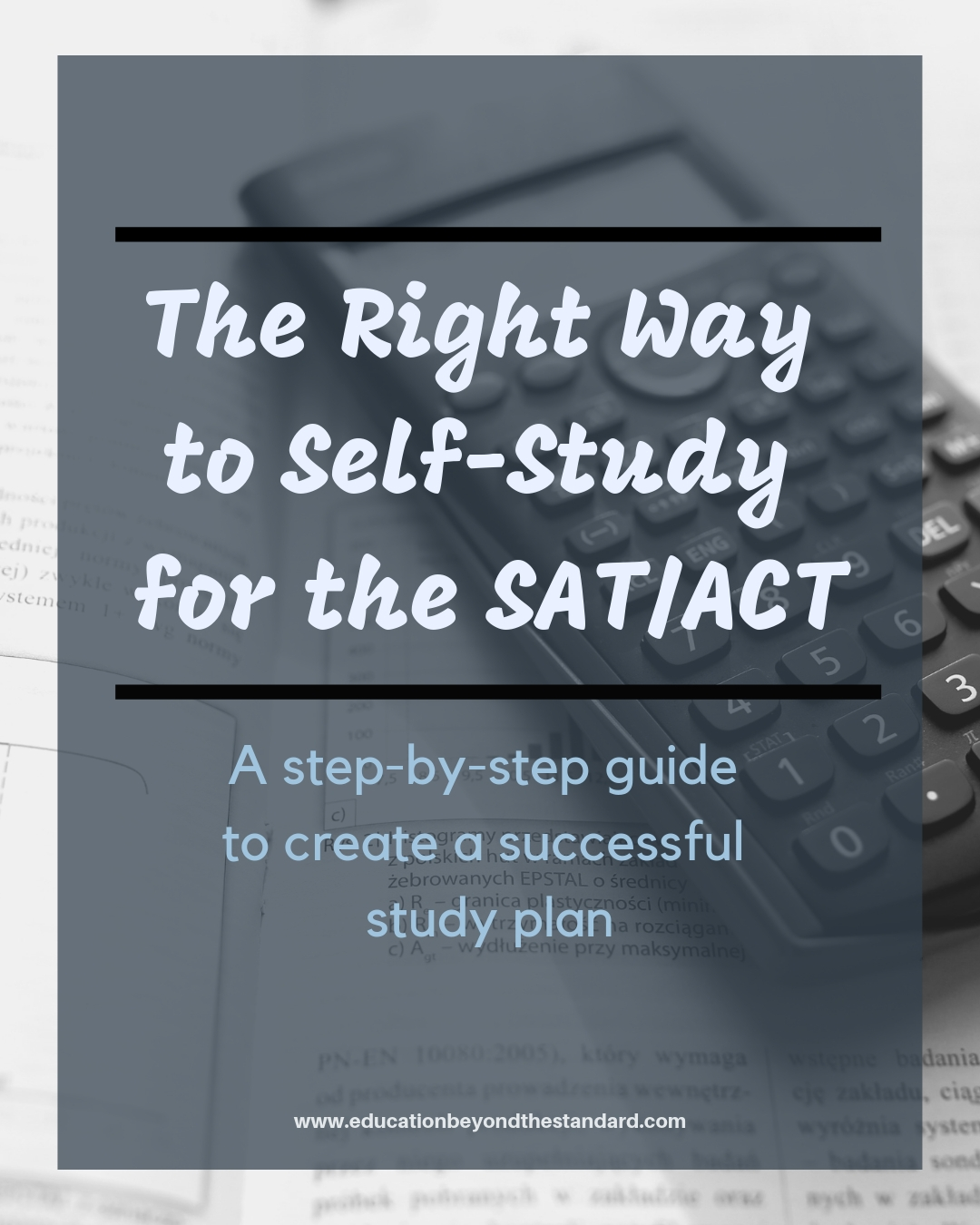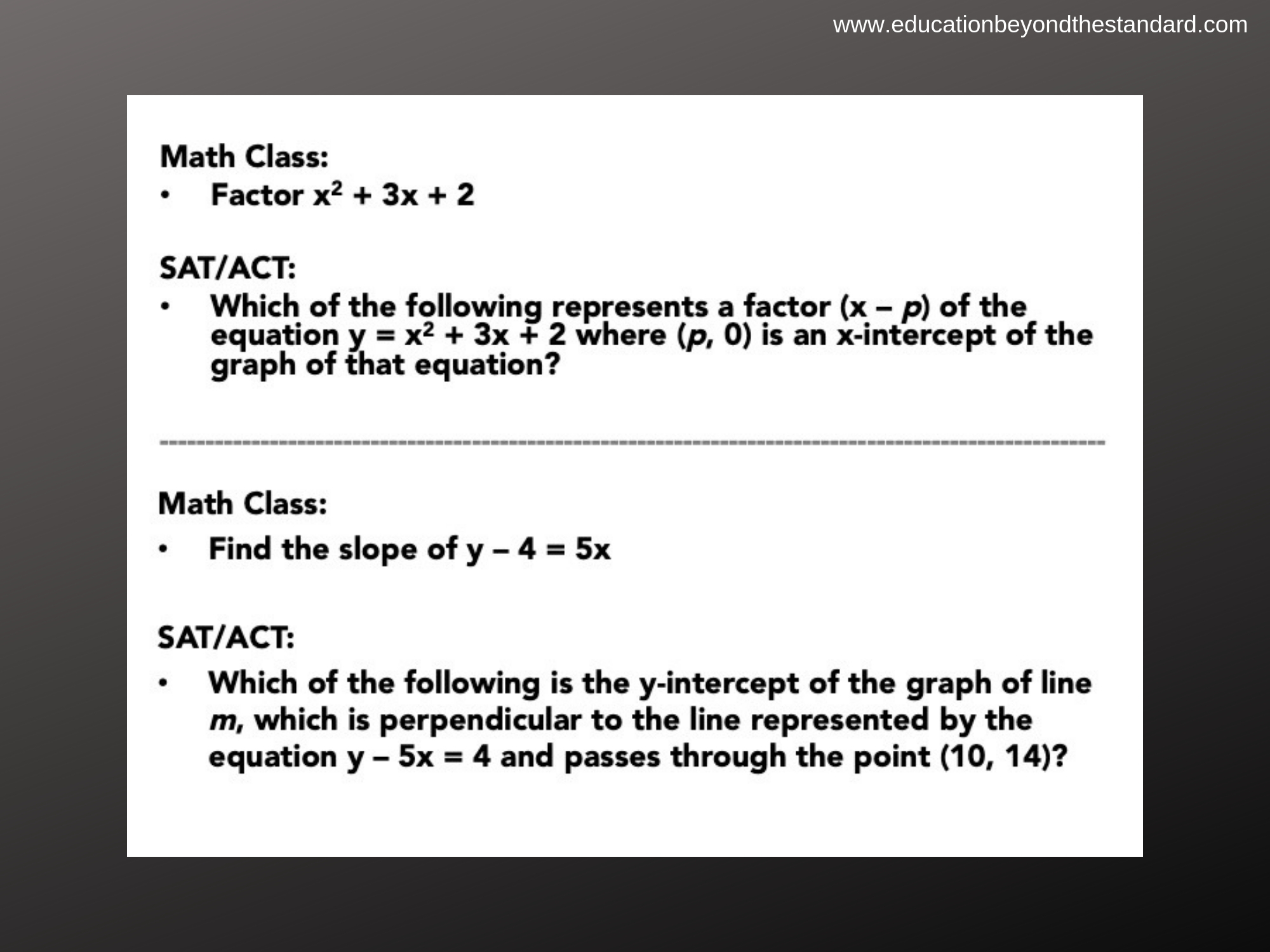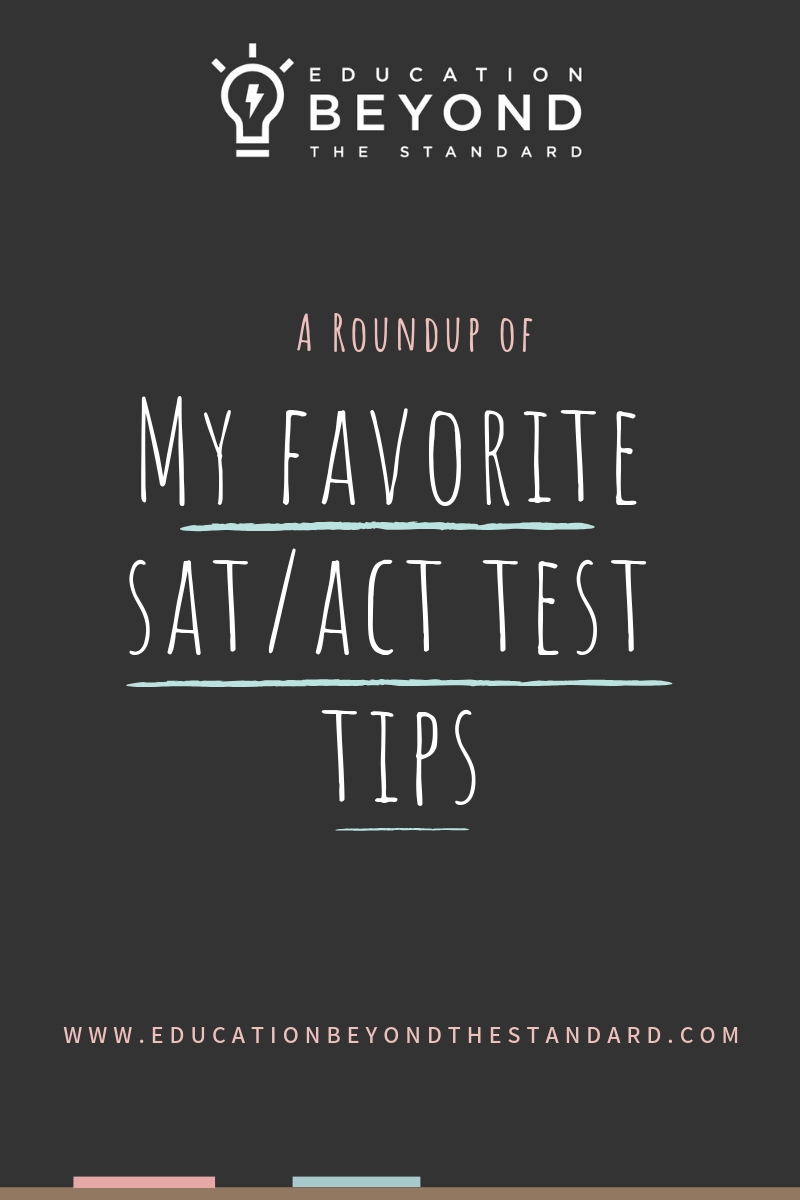5 Reasons to Incorporate SAT/ACT Practice into Your Curriculum
/Secondary curriculum in most schools and districts is meant to prepare students for university study, but it rarely prepares them for the exams that still play an important role in college admissions. Whether due to time constraints, the perceived difficulty of the material, or the idea that SAT/ACT material is incompatible with other curriculum priorities, SAT/ACT practice is often left to students to do on their own.
In this article, I’ll give you 5 reasons why incorporating SAT/ACT practice into your curriculum is a great idea, whether or not your school separately offers SAT/ACT prep courses or workshops. In a later post, I’ll give you some ideas for easy ways to do so.
1. SAT/ACT Material Goes Beyond Most State Standards, Meaning that You’ll Not Only Cover But Exceed Your Standards
When compared with the Common Core and other state standards, the SAT and ACT require a higher level of reading, language, and math skills. Not every topic or skill you teach will appear on the SAT/ACT, but where there’s an overlap, SAT/ACT questions generally go deeper and require more critical thinking and analytical skills. The reading passages are rich sources of academic and Tier 2 vocabulary. Math questions tend to require greater integration of diverse math skills and more complex problem solving.
2. Skills Tested on the SAT/ACT Are Critical to Success in Higher Education
Before I started tutoring and offering small group SAT/ACT test prep, I mistakenly believed that the SAT and ACT measured mastery of topics and content knowledge. As I began to understand the tests better, I realized that they are actually designed to measure academic skill.
While content knowledge is certainly a big part of doing well on the math portion of these exams, and vocabulary is important for the language portions, content knowledge only gets students so far. The rest comes down to skill: how well do students parse a text for meaning, argument, evidence, and structure? How well can they problem solve? How well do they think and write about a topic? These are skills that are crucial for students’ future academic outcomes.
3. Not All Students Have Access to SAT/ACT Prep or Know How to Prepare
All students are subjected to the same test, but unfortunately study after study confirms that socioeconomic factors play a major role in SAT/ACT scores. Building in some SAT/ACT-type practice to your curriculum is a great way to make sure all students gain familiarity with the test material and format.
4. SAT/ACT Practice Can Make Topics or Skills Covered in Your Curriculum More Relevant and Memorable to Students
I can personally attest to the truth of this one: when I mention to students that a particular math topic is tested frequently on the SAT/ACT, their ears perk up. What may have quickly been forgotten after a lesson or unit ends is now given a place of greater importance and is more likely to be remembered. Not every student will be motivated to pay extra attention to material they know might appear on the SAT/ACT, but many will.
5. SAT/ACT Practice Provides a Great Challenge and Enrichment Opportunity
For consistent early finishers and high achieving students, SAT/ACT practice provides a challenge and an opportunity to test and improve their skills. I love reinforcing crucial academic skills that are relevant to the topic at hand with “SAT/ACT challenge questions.”
I’m a big believer in the idea that all students (not just our self-motivated high achievers) benefit from challenging work that requires higher level thinking and problem solving, with the appropriate support and resources.
Please let me know your thoughts (and whether you include any SAT/ACT practice in your classroom) in the comments below!







